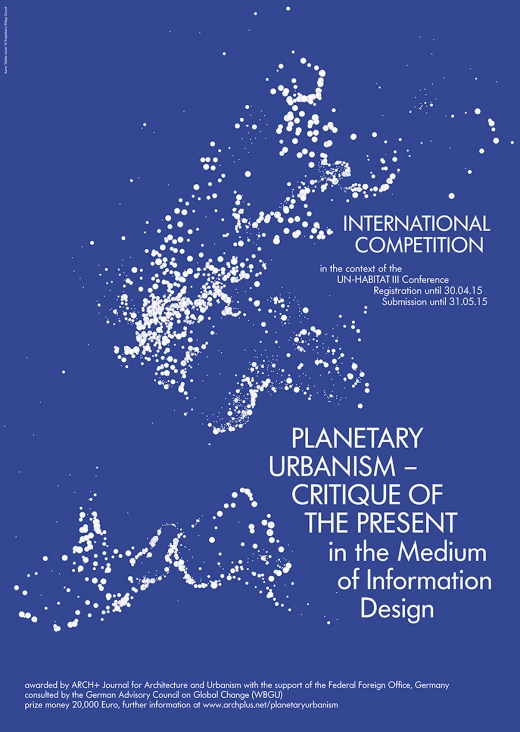Submitted by WA Contents
Planetary Urbanism – Critique Of The Present in the Medium of Information Design
United Kingdom Architecture News - Feb 16, 2015 - 10:10 7292 views

International Competition
in the context of the UN-HABITAT III Conference
awarded by the Journal ARCH+
with the support of the Federal Foreign Office, Germany
consulted by the German Advisory Council on Global Change (WBGU)
The Topic
Hastened by industrialisation, the progressive urbanisation of our world has profoundly transformed the planet and continues to do so. The impacts of these changes have not yet been grasped in full, and an end to this process is not foreseeable.
Cities were always centres of innovation and the driving force of developments, throughout all epochs and cultures. The organisation of life in cities formed the starting point for the development of structures based on the division of labour and hence the release of creative potentials that benefited science, technology and the arts, for the accumulation of capital, increasing prosperity and the refinement of life. With few exceptions, cities were also the stages on which the struggles for more social equality and for societal progress played out. Cities are likely humankind’s greatest cultural achievement and, in this respect, a marker of the Anthropocene period, the geological age defined by human activity.
While the development of the (European) city over the course of its two-and-a-half thousand year history features umpteen radical departures, within which the forms of the reproduction of urban life have fundamentally changed, cities nevertheless remained insular structures up to the nineteenth century. By contrast, the degree of urbanisation that we are witnessing today is unprecedented. The further development of the Anthropocene period ought to be closely linked with whether or how we can organise or ‘manage’ the urbanisation that emanates from this process, and which revolutionises the established conditions no longer merely on a local, regional or national level, but which has long-since become a global phenomenon with far-reaching geological and geopolitical repercussions......Continue Reading
> via archplus.net
